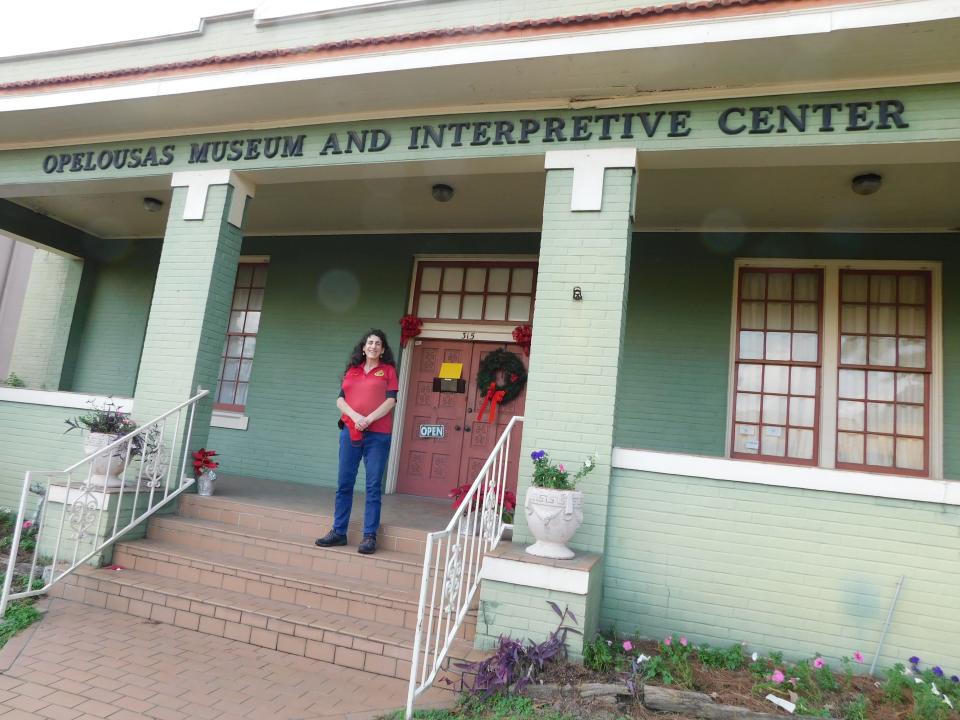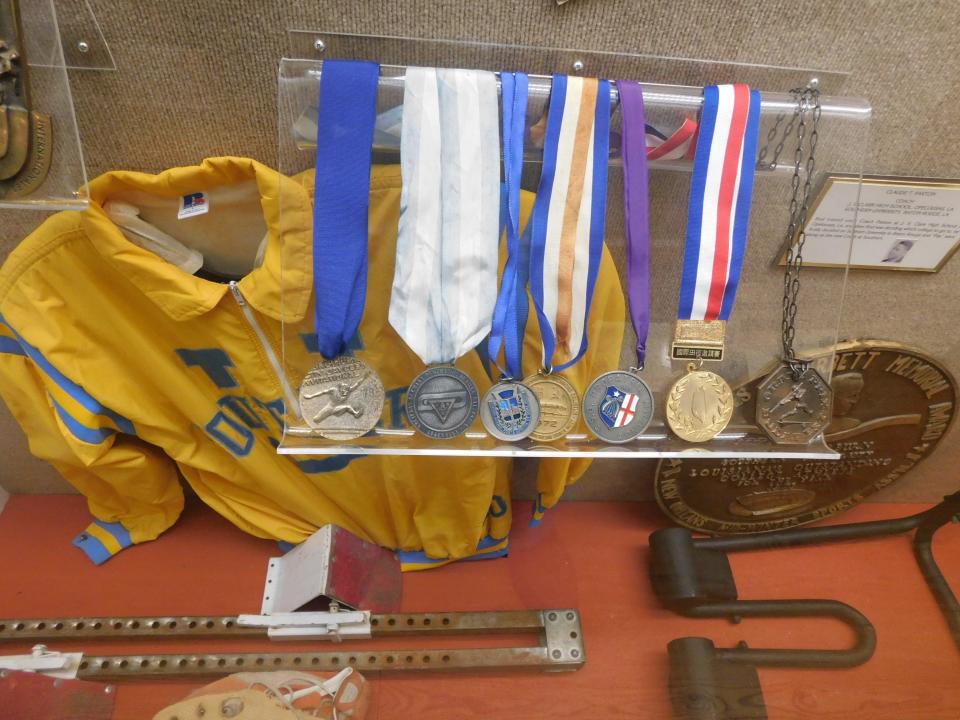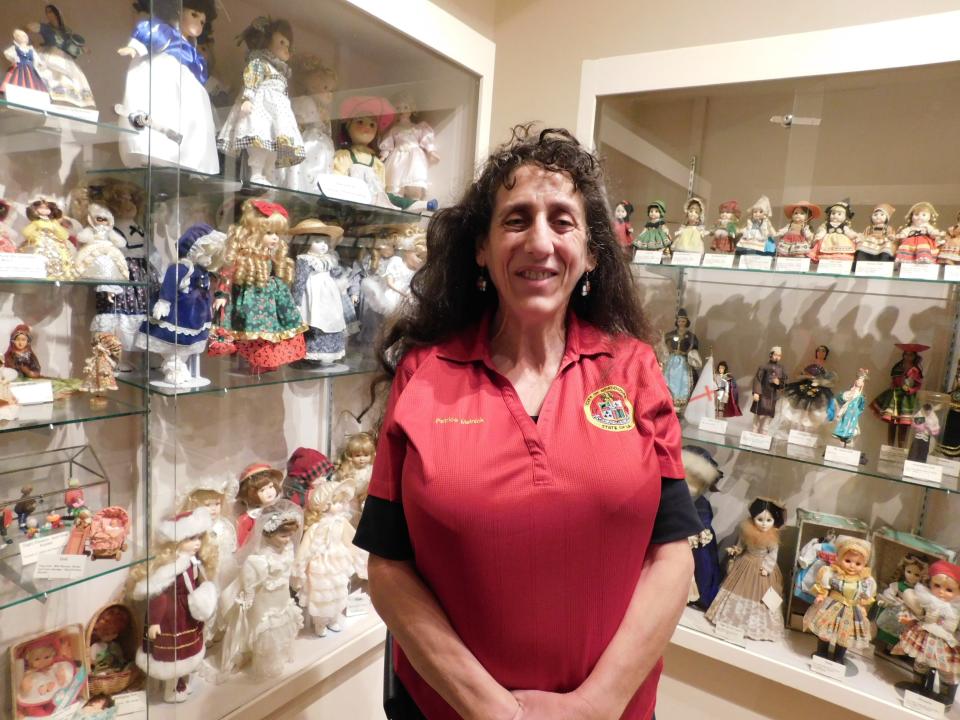Opelousas Museum reopens after the pandemic forced closure for 18 months
- Oops!Something went wrong.Please try again later.
As Patrice Melnick moves through the rooms of exhibits at the Opelousas Museum and Interpretive Center, she feels fortunate to be the executive director of what she describes as a hidden jewel.
Three centuries of city and St. Landry Parish culture and history await visitors’ scrutiny at the newly re-opened museum at 315 N. Main St. in the downtown business district, and Melnick is more than anxious to present an eclectic group of historic displays now tucked inside the moderately sized building.
Melnick began in August preparing the museum to reopen after it was closed by city officials for 18 months due to COVID-19 precautions.
The museum doors officially swung open again Dec. 28 somewhat quietly, as Melnick says she preferred a more subdued beginning in order to build sufficient interest and momentum after the museum was closed for such a long time.

“I want to work first with what we already have here and then continue building,” Melnick said. “I like challenges and I like to create and use my imagination and working (at the museum) will give me that opportunity. When people begin coming in again, they will see a reflection of such a deep and impressive culture that represents our area.”
During the past five months following her appointment as director, Melnick has been assessing the numerous items in a building that has been used as a funeral home, municipal library and a private business.
That assessment phase included determining the overall condition of the museum, the donated exhibits that were already there as well as writing grants in order to obtain funding, Melnick explained.
“I love to write and I love history. We have so many fascinating items here, and I want to be able to communicate that to other people,” Melnick added. “The culture and music of the area are fascinating and the people are so welcoming. They speak to you when they say hello.”
So far, through Melnick’s grants, the city has obtained a St. Landry Parish Tourism Marketing Grant, another from the Atchafalaya National Heritage Area Grant Program, the LEH Poet Laureate and an additional allocation from CLECO.
Louisiana poet laureate Mona Lisa Saloy is scheduled to host a writing workshop along with a poetry reading in June, while Opelousas artist Jerome Ford plans an art exhibit at the museum in 2022, Melnick notes.
In order to learn more about her role as a director, Melnick has enrolled in online certification classes through the American Association of State and Local History.
Melnick, who moved to Louisiana and eventually St. Landry Parish about two decades ago, has been fascinated about what already exists in the display rooms.
A glass showcase in the main hallway features the medals, memorabilia and awards that Opelousas native Rodney Milburn won during his track career at Southern University. In 1972, Milburn won a Summer Olympics gold medal in the hurdle events.

Moving into one of the larger rooms, there is a featured display of life-sized historic characters such as Huey Long performing and talking, sometimes to one another. Opelousas inventor Charles Lanusse designed the characters, their personalities and the intricate mechanisms that control movements and speech.
Several rooms include the massive doll and doll house collection of Geraldine Welch Smith. Some of the estimated 400 dolls were purchased, but Melnick said Welch made several of them from Styrofoam cups and pipe cleaners. The exhibition also includes several large dollhouses.

The area’s music is represented by artifacts from parish zydeco, rock 'n’ roll and French musicians. Also Melnick is attempting to more adequately archive videos and articles from the annual Southwest Louisiana Zydeco Festival.
One corner of the largest museum room contains agricultural items used before the tractor and combine area of farming.
Melnick says one family who already toured the museum seemed fascinated with the number of dolls in the Welch collection. Some of the younger children, Melnick noted, were enthralled with the talking animals and characters created by Lanusse.
This article originally appeared on Opelousas Daily World: Opelousas Museum reopens after COVID-19 pandemic forced it to close

